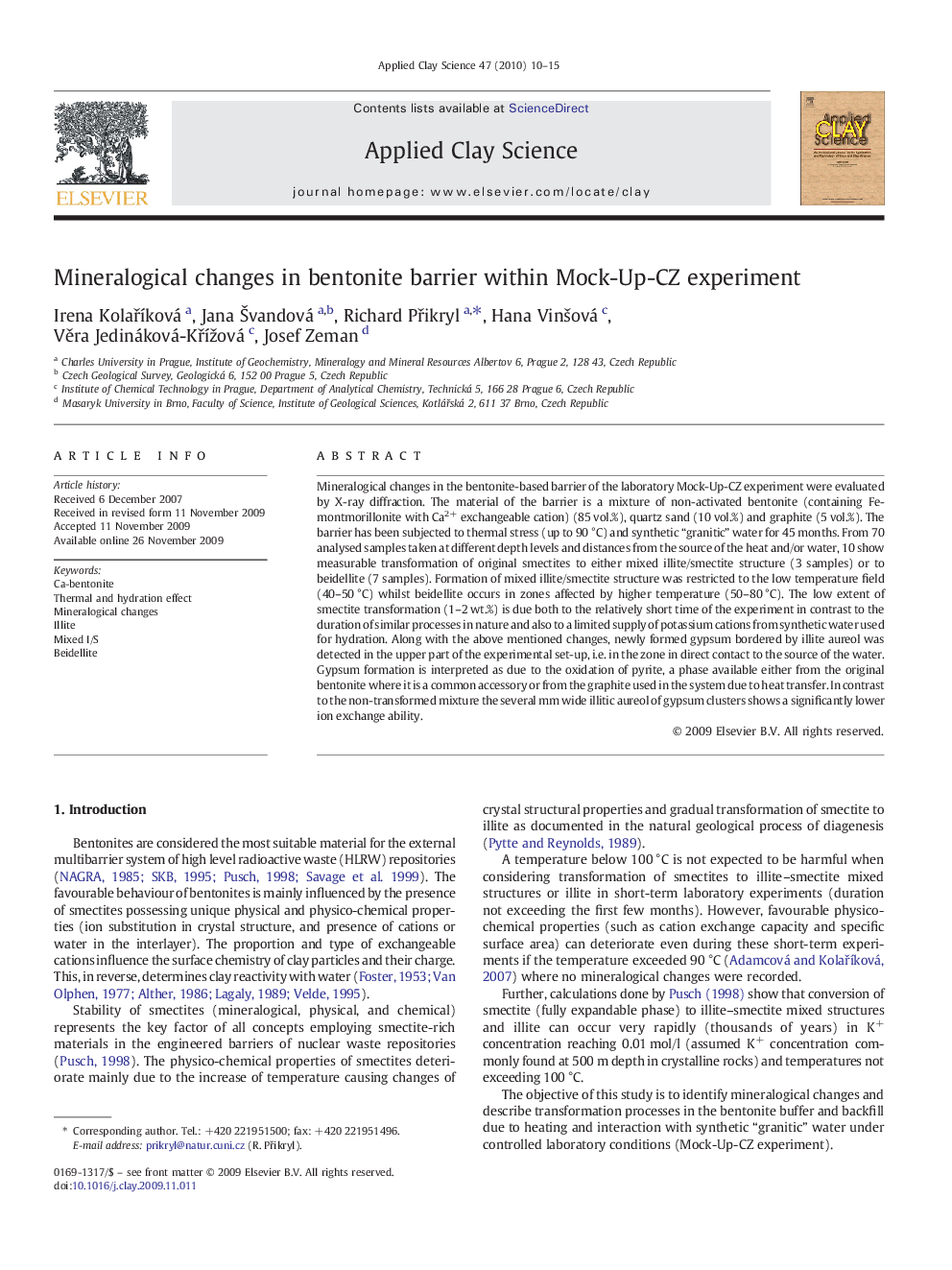| Article ID | Journal | Published Year | Pages | File Type |
|---|---|---|---|---|
| 1695809 | Applied Clay Science | 2010 | 6 Pages |
Mineralogical changes in the bentonite-based barrier of the laboratory Mock-Up-CZ experiment were evaluated by X-ray diffraction. The material of the barrier is a mixture of non-activated bentonite (containing Fe-montmorillonite with Ca2+ exchangeable cation) (85 vol.%), quartz sand (10 vol.%) and graphite (5 vol.%). The barrier has been subjected to thermal stress (up to 90 °C) and synthetic “granitic” water for 45 months. From 70 analysed samples taken at different depth levels and distances from the source of the heat and/or water, 10 show measurable transformation of original smectites to either mixed illite/smectite structure (3 samples) or to beidellite (7 samples). Formation of mixed illite/smectite structure was restricted to the low temperature field (40–50 °C) whilst beidellite occurs in zones affected by higher temperature (50–80 °C). The low extent of smectite transformation (1–2 wt.%) is due both to the relatively short time of the experiment in contrast to the duration of similar processes in nature and also to a limited supply of potassium cations from synthetic water used for hydration. Along with the above mentioned changes, newly formed gypsum bordered by illite aureol was detected in the upper part of the experimental set-up, i.e. in the zone in direct contact to the source of the water. Gypsum formation is interpreted as due to the oxidation of pyrite, a phase available either from the original bentonite where it is a common accessory or from the graphite used in the system due to heat transfer. In contrast to the non-transformed mixture the several mm wide illitic aureol of gypsum clusters shows a significantly lower ion exchange ability.
